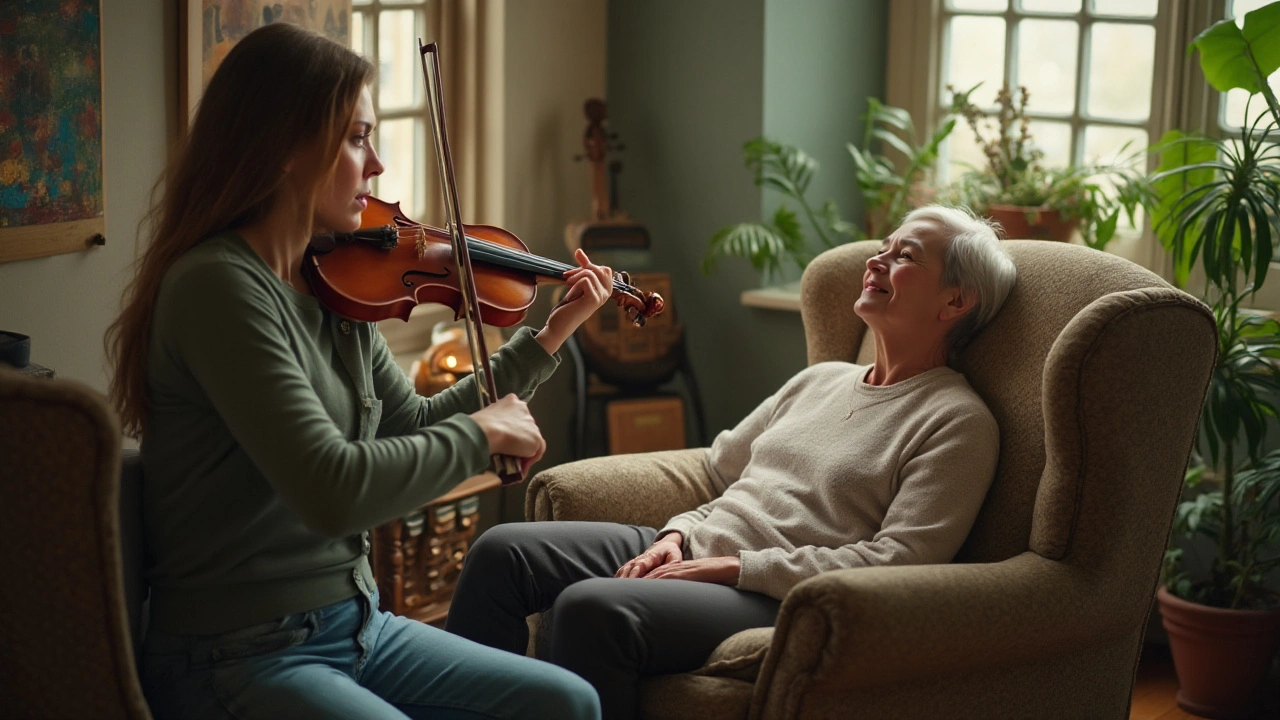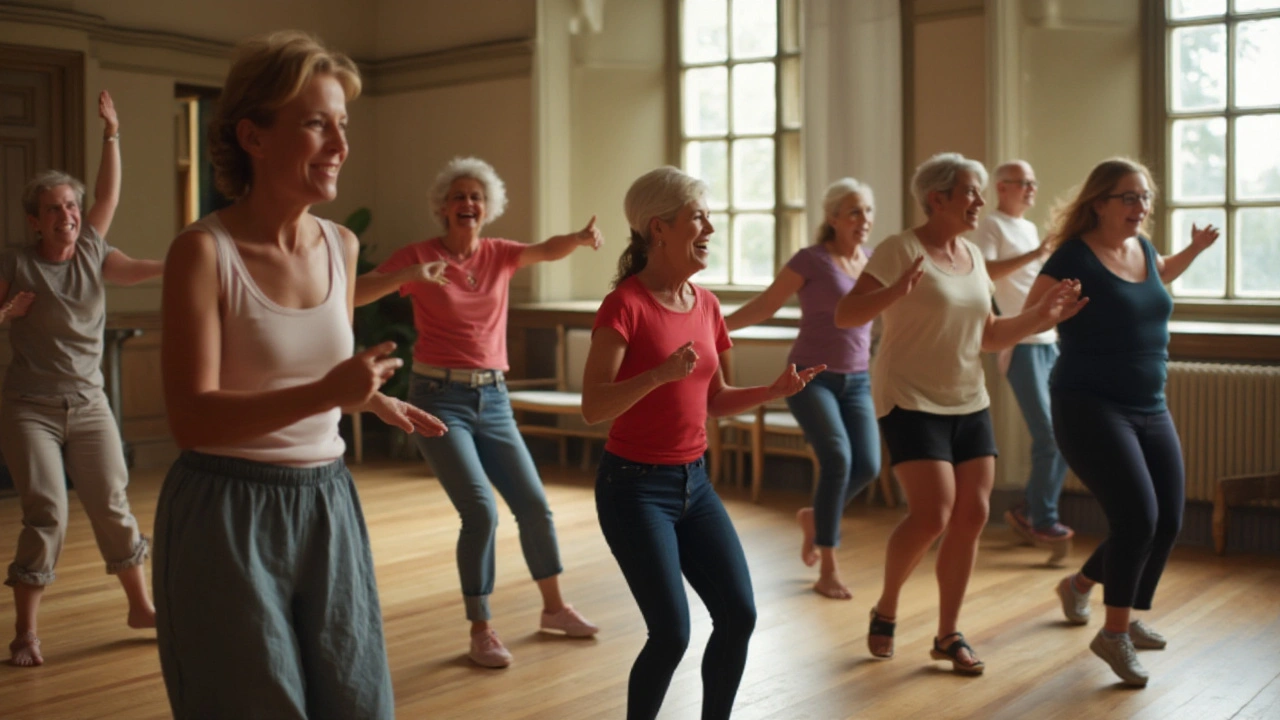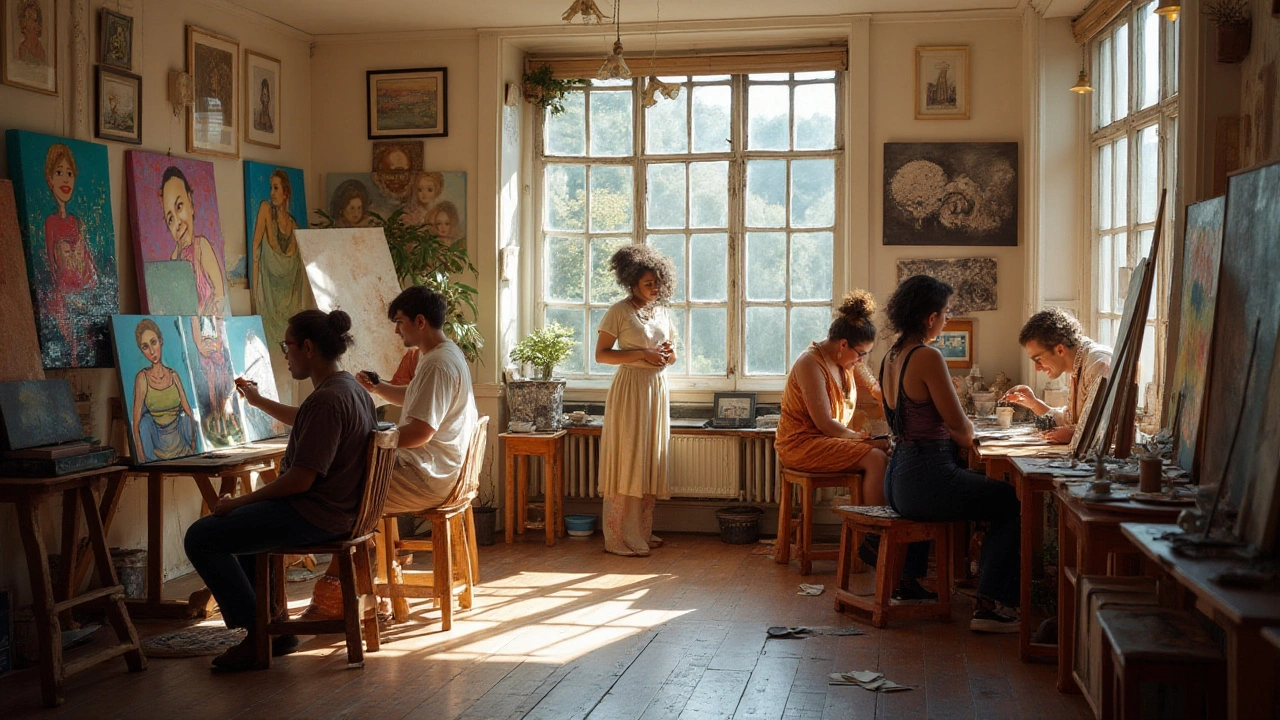Creative arts therapies have been steadily gaining recognition as effective tools for addressing mental health challenges and fostering personal growth. By tapping into the innate human drive for creativity, these therapies offer pathways to expression and healing that transcend traditional talk therapy.
Employing a symphony of arts like painting, music, dance, and drama, creative arts therapies nurture a holistic approach to emotional wellbeing. They invite individuals to explore the depths of their emotions without the constraint of words, offering a sanctuary where feelings can be translated into colors, rhythms, movements, and stories.
For those considering a journey with creative arts therapies, understanding the vast array of options available is pivotal. Each modality offers its unique benefits, enabling personalized healing experiences that resonate on both a personal and therapeutic level.
- Understanding Creative Arts Therapies
- Types of Creative Arts Therapies
- Benefits of Engaging in Creative Arts Therapies
- How to Get Started with Creative Arts Therapies
- Real-life Success Stories and Testimonials
Understanding Creative Arts Therapies
The realm of creative arts therapies is as vibrant and multifaceted as the art forms it encompasses. At its core, these therapies are rooted in the understanding that art-making is an intrinsic part of human nature and experience. Whether one is drawing, painting, acting, or moving rhythmically to the beat of a drum, the act of artistic creation stimulates the senses and engages the mind in uniquely healing ways. Unlike traditional therapies that may rely primarily on verbal communication, creative arts therapies offer alternative avenues for expression, especially for those who find words limiting. This approach considers the physical, emotional, and intellectual aspects of the person, recognizing that healing can occur on multiple levels simultaneously.
Creative arts therapies encompass a wide range of modalities. Art therapy might involve using paints and pastels to explore feelings through colors and shapes. Music therapy could harness the power of sounds and silence to evoke emotions and facilitate communication. Dance and movement therapy encourage individuals to express themselves through bodily motion, making every gesture a conduit for emotional release. Drama therapy invites participants to reenact personal stories or adopt fictional roles to gain new perspectives on real-life challenges. Each of these modalities taps into the therapeutic potential of the arts in unique ways, catering to the diverse needs and preferences of individuals seeking healing and self-discovery.
Research suggests that engaging in creative arts therapies can have profound effects on mental health and overall wellbeing. According to a study published by the American Journal of Public Health, art and music therapies were shown to significantly reduce levels of anxiety and depression. The researchers found that participants in these therapies often reported feeling more relaxed and connected to their emotions and inner selves through the artistic process. Another key aspect of these therapies is their ability to foster resilience and adaptability by encouraging creative problem-solving and self-expression.
One notable advocate of creative arts therapies, Dr. Cathy Malchiodi, emphasizes how the process of making art can unlock the brain's innate ability for self-regulation and healing. She states,
"Through the use of creative arts therapies, individuals are often able to bypass the cognitive filters that inhibit healing, accessing parts of the brain associated with intuition and feeling."This powerful expression highlights the potential for creative arts therapies to transcend cognitive barriers and delve into deeper emotional truths.
In practical terms, creative arts therapists work with individuals across various settings, including hospitals, schools, rehabilitation centers, and private practices. These professionals often have specialized training and certification in the specific art medium they utilize, blending psychological knowledge with artistic expertise to guide their clients toward meaningful change. The therapeutic process can be highly individualized, sometimes involving the creation of tangible art pieces, while at other times focusing on the experiential aspect of the art-making process itself.
For those interested in exploring the benefits of creative arts therapies, it is essential to understand that the journey is highly personalized and should be tailored to the unique needs and preferences of the individual. Whether it's through the strokes of a paintbrush or the rhythm of a dance, the freedom to explore, create, and express is at the heart of these therapies. It is the promise of finding one's voice, not just through spoken words, but through all the senses and forms that art embodies, that defines the transformative power of creative arts therapies.
Types of Creative Arts Therapies
There is a vibrant spectrum of creative arts therapies available, each offering unique ways to explore our inner worlds and address various mental health challenges. One of the most recognized forms is art therapy, where the act of creating visually can help unravel complex thoughts and emotions. Through painting, drawing, or sculpting, individuals can express what might be too intricate for words. Art therapists guide these expressions to promote healing, often uncovering insights through colors and shapes that emerge naturally without premeditation.
Another significant modality is music therapy, which operates on the profound understanding that sound can influence our mental states. Participants might engage in both listening to and creating music, using it as a conduit for emotional exploration or celebration. Music reaches into the crevices of our emotions, offering solace, solace, and sometimes a catalyst for joy. The rhythm's consistency can bring structure to turbulent emotions, while melodies can evoke memories and emotions otherwise trapped beneath consciousness. A widely cited benefit is music's ability to reduce symptoms of depression and anxiety, offering a meditative reprieve through rhythm and harmony.
Incorporating the visceral power of movement, dance or movement therapy functions on the premise that our bodies carry stories our minds might not readily access. Facilitated by a qualified therapist, this form often allows individuals to explore their feelings through physical expression. Participants often find that movement can unlock emotions anchored deep within, offering new paths to self-awareness and transformation. Those who engage in dance or movement therapy have reported improved confidence, body image, and emotional resilience.
"Creative arts therapies provide us with the opportunity to learn more about ourselves in a safe and nurturing environment," explains Cathy Malchiodi, an esteemed art therapist and author in the field.
Drama therapy is yet another avenue that blends the storytelling aspects of theater with therapeutic goals. This method provides a stage for participants to enact scenes from their lives or imagine new scenarios, offering fresh perspectives on personal experiences. The playful nature of drama makes it a highly engaging and often enjoyable therapeutic practice, fostering self-discovery and emotional release through role play, storytelling, and improvisation.
The power of words comes alive in poetry therapy, where literature and reflective writing serve as tools for healing. Here, participants dive into either their own or others' writings, using the language to explore their thoughts and psyche. Poetry's unique ability to convey complexities in condensed form often makes it a favorite among those who process experiences best through reading and writing. Structured around metaphor and meaning, this therapy can offer clarity and understanding in a concise yet profound manner.
These therapies are not just limited to traditional methods and can be adapted to various forms such as digital expressions and mixed media, ensuring accessibility and relevance in our ever-changing world. The creative process within each modality fosters a deeper connection to oneself, offering therapeutic benefits that nourish mental health and personal growth. Whether through the stroke of a brush, the rhythm of a drum, or the gesture of a hand, creative arts therapies invite individuals to rediscover themselves with limitless opportunity.

Benefits of Engaging in Creative Arts Therapies
Engaging in creative arts therapies can be a transformative experience for individuals grappling with emotional and psychological challenges. These therapies offer a unique, non-verbal outlet for expression, allowing people to convey feelings that are often too complex for words. Art, music, dance, and drama therapy can open doors to new ways of thinking, providing alternative perspectives on personal issues. This can be particularly beneficial for those who find verbal communication challenging or intimidating.
Creatives processes are known for their cathartic effect, providing individuals with opportunities to explore and process emotions in a safe environment. The act of creation itself can serve as a mediating tool, facilitating self-discovery and personal insight. According to a study published by the American Journal of Public Health, engaging in creative arts therapies has been shown to reduce levels of anxiety and depression while boosting self-esteem and motivation.
"Through art-making, patients can achieve depths of insight and emotional processing that conversations cannot always reach," notes Dr. Cathy Malchiodi, a renowned figure in the field of therapeutic arts.
Physical benefits are equally notable, particularly in dance therapy, which encourages physical activity and body awareness. This form of therapy can improve physical health by enhancing strength, coordination, and mobility. Moreover, it promotes the release of endorphins, which are natural mood lifters. Group therapies also foster a sense of community and belonging, which is crucial for individuals who feel isolated due to mental health conditions.
List of potential benefits can also include:
- Enhanced emotional resilience
- Improved cognitive functions
- Reduced symptoms of distress and trauma
- Improved social skills and relationships
In younger populations, creative arts therapies can have a profound impact on cognitive development and emotional intelligence. Children and adolescents often express themselves more freely through art, allowing therapists to identify underlying issues that might not surface in traditional settings. Creativity becomes a nurturing ground for building valuable coping mechanisms that can serve these young minds throughout their lives. Given these multifaceted benefits, it's not surprising to see the adoption of creative arts therapies in diverse settings, from hospitals and schools to rehabilitation centers and community clinics.
As the journey of healing varies from person to person, creative arts therapies adapt to individual needs, offering a customizable path to improved mental health. Whether it's the soothing sound of music, the vibrant strokes of paint, or the expressive movement of dance, each modality provides a rich tapestry of healing possibilities. The versatility and accessibility of these therapies make them a powerful tool in the arsenal against mental anguish.
How to Get Started with Creative Arts Therapies
Embarking on a journey with creative arts therapies is a deeply personal experience, often leading to profound insights and healing. To begin, it is essential to reflect on which form of creative arts therapy resonates most with you. Some might feel drawn to the visual expressiveness of painting, while others might find solace in the harmonious sounds of music or the rhythm of dance. Your personal inclinations will guide you towards a modality that best fits your emotional and mental needs.
Once you have identified the art form that appeals to you, the next step is finding a qualified therapist. It's important to research and connect with licensed professionals who have experience in this field. The Australian, New Zealand and Asian Creative Arts Therapies Association (ANZACATA) is a great resource for locating certified practitioners who can help you navigate your therapy journey. During the initial consultation, discuss your goals, preferences, and any concerns you might have; this will help in tailoring sessions to your specific needs.
For those who prefer exploring creative arts therapies in a group setting, community workshops and classes offer a wonderful way to immerse yourself alongside others. These environments provide unique opportunities for social interaction and shared experiences, often leading to a sense of community and mutual support. Engaging with peers can enhance the therapeutic process by offering different perspectives and experiences that enrich your own.
If you're still hesitant about diving into structured sessions, consider starting with self-guided therapy at home. Many find it helpful to begin by setting aside dedicated time each day to engage in their chosen art. Whether it's journaling through poetry or creating art pieces, the key is to commit to regular practice. A quiet space with minimal distractions can be beneficial, as it encourages immersion in the therapeutic process and allows for greater introspection.
Dr. Cathy Malchiodi, a leading expert in the field, once stated, "Art speaks to the silent, but powerful part of the psyche that is often unreachable through conventional modes of language and intellectual reasoning."
Moreover, combining different art forms can be incredibly beneficial. For instance, you might consider intertwining movement and music, allowing your body to move intuitively to an improvised melody. This approach can deepen your connection to the process and unlock new avenues for expression. Remember, the most important aspect of creative arts therapies is that there are no right or wrong ways to express yourself.
Here is a simple guide to help you get started:
- Identify the art form that resonates the most with you.
- Research and connect with a certified creative arts therapist.
- Consider group settings for social interaction and shared experiences.
- Start with self-guided therapy if formal sessions seem daunting.
- Combine different art forms to broaden your experience.
It’s crucial to remain open-minded throughout this journey. Allow yourself the freedom and flexibility to explore different paths and let your creativity be the guide. With patience and a nurturing environment, creative arts therapies can unlock profound healing and transformation.

Real-life Success Stories and Testimonials
Creative arts therapies have opened new doors to healing and self-discovery for countless individuals. One of the most heartening aspects of these therapies is the diverse backgrounds of those they have helped. From children grappling with social anxiety to adults recovering from trauma, creative arts therapies have woven through lives, painting brighter futures. In one documented case, a young girl named Lily found her voice through music therapy. Struggling with severe anxiety, traditional therapies had shown little progress, but engaging with music allowed her to express emotions she couldn't articulate otherwise. This transformation enabled Lily not only to cope better with daily challenges but to thrive socially.
Moreover, consider the embrace of dance therapy by veterans coping with post-traumatic stress disorder (PTSD). Paul, a veteran of multiple deployments, found that traditional therapies were not addressing his invisible scars. It was only through dance therapy that he began to reconnect with both his body and mind, finding grounding and inner peace. Dance therapy provided Paul a structured and rhythmic way to release the tension and pain that talking could not. Each session made him feel stronger and more attuned to his mental health.
The transformative power of creative arts therapies was highlighted by the American Art Therapy Association, which stated, "Art therapy allows us to give shape to our fears and hopes in a way that words cannot."
Creative arts therapies are not limited to individuals dealing with specific diagnoses; they have also made remarkable impacts on typical life's stresses. Take the case of Ella, a middle-aged woman navigating midlife changes. Through painting, she discovered a new way of processing her feelings and forging a new identity. Her sessions were therapeutic, allowing her to delve into areas she would have otherwise avoided. The paints and brushes became her confidants, whispering truths and wisdom only she could discern. Stories like these reflect why so many are turning toward these therapies for a sense of renewal and healing.
An interesting fact worth mentioning is the growing body of research supporting these therapies. A review of studies published in the Journal of Emerging Art Therapies found that individuals who participated in regular art therapy sessions reported a significant reduction in anxiety symptoms in 60% of the cases. Additionally, the report highlighted the role of creative arts therapies in improving cognitive functions amongst dementia patients, providing them with enhanced quality of life and social interaction.
In Perth, where diverse communities foster artistic expression, local organizations are increasingly offering creative arts therapies to reach more people. These include outreach programs in schools and community centers tailored to accommodate cultural and individual needs. By bringing art into counseling, these institutions have crafted spaces where people like Claire, a teenager who felt isolated in a new school environment, could come to draw a newfound sense of belonging and confidence.
